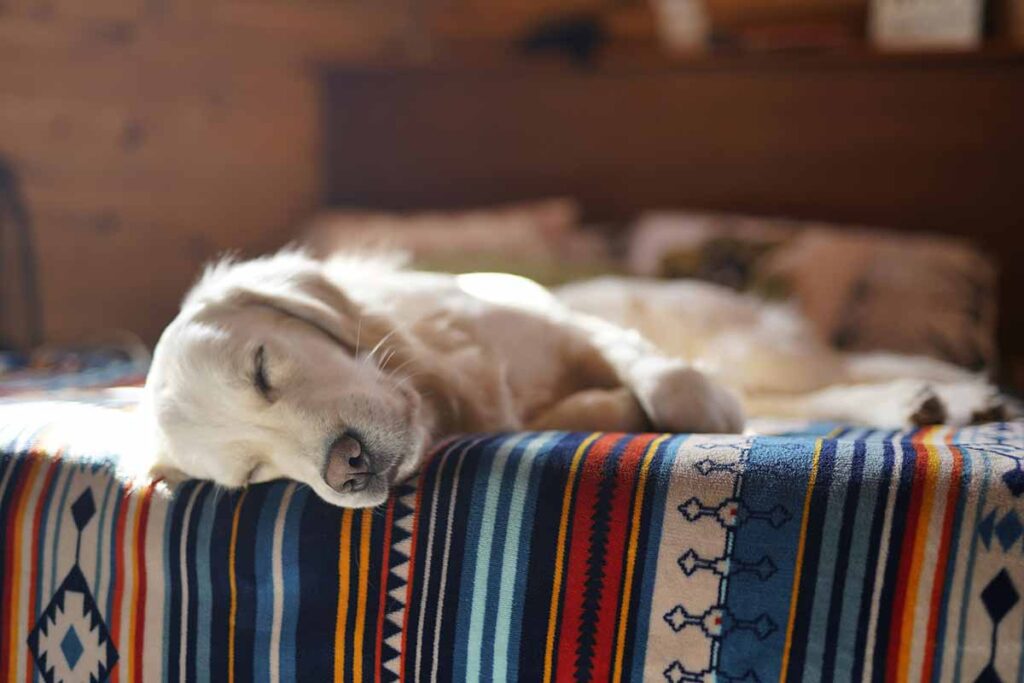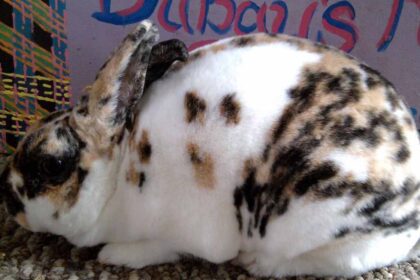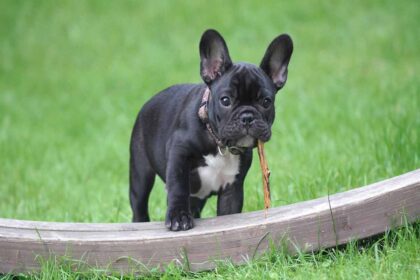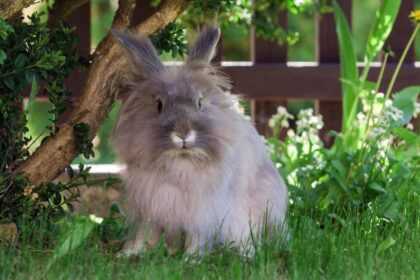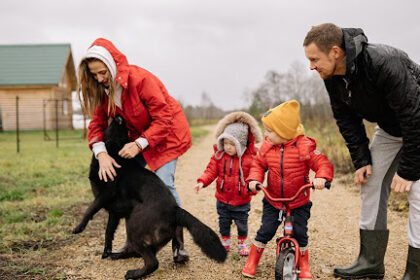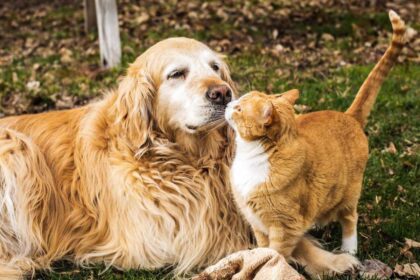Hello, fellow dog lovers! Today, I’d like to discuss an issue that is frequently forgotten but is critical for our pets sleep. Have you ever wondered what your dog is dreaming about as they sleep? Or how do their sleep patterns compare with ours? Buckle up, because we’re going to go on an adventure through the world of doggy dreams!
Understanding Dog Sleep Patterns
Let us begin by discussing normal sleep periods for dogs. Our four-legged friends, like us, require beauty rest, yet the amount varies according to age and breed. Adult dogs normally sleep 12 to 14 hours per day. puppies and the elderly may require more sleep.
Now let’s see how dogs and human’s sleep. Dogs and humans have similar sleep cycles, which include both REM and NREM sleep. During REM sleep, your puppy may shake, cry or bark as they chase rabbits in their dreams. It’s as if they have their own hidden adventure universe.
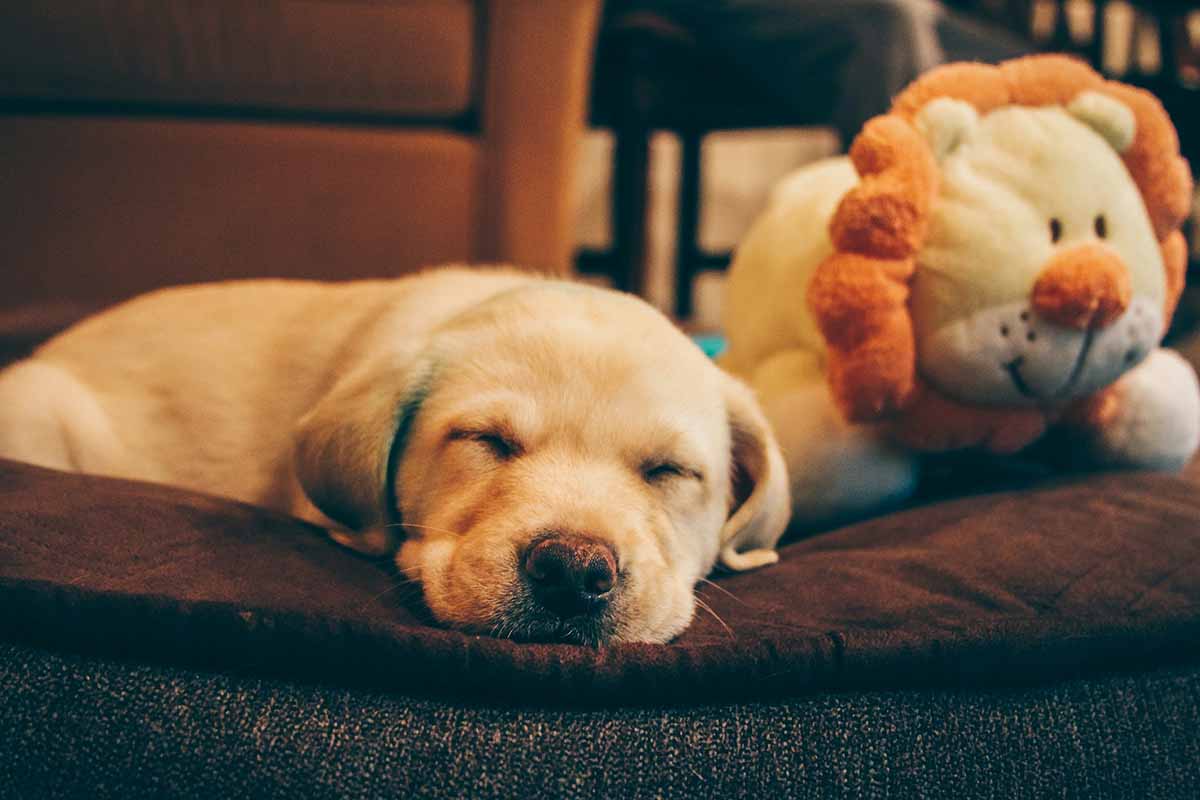
Factors That Influence a Dog’s Sleep
Age and breed have a major effect on a dog’s sleeping patterns. Puppies, love their little hearts, require lots of sleep to nourish their developing bodies and brains. Their sleep patterns may change as they grow older, but they will always value their naptime. And don’t forget about breed differences; some breeds are known for being great nappers, whereas others are livelier and may require less rest.
Importance of Doggy Downtime
Now, let’s look at why sleep is so important for our canine companions’ health and wellbeing. Consider this: when you’re running low on energy, you’re not exactly a sign of health. The same goes for dogs. Quality sleep is critical to their physical and mental wellness. Those calm sleeps allow their bodies to heal and replenish, keeping them in peak shape.
But sleep is important for more than just physical regeneration; it also helps with thinking. Dogs, like humans, require sleep to consolidate memories, process information, and maintain their sharpness. So, the next time you catch your pup catching some Z’s, remember that they’re not just snoozing—they’re recharging their brain batteries for another day of adventures.
The Importance of Sleep for Overall Dog Health
So, why should you care about your dog’s sleeping habits? Aside from the fact that they look cute when they’re wrapped up for a sleep, their health depends on it. By ensuring they get adequate sleep, you’re preparing them for a happier, healthier life. Plus, who doesn’t adore a well-rested puppy with a bouncing tail and a twinkle in their eye?
Quick Fact: Did you know that some dogs have been known to sleep up to 18 hours a day? Talk about living the dream!
Historical Origins of Dog Dreams
To properly understand why our furry companions sleep the way they do, we must travel back in time to their evolutionary origins. Dogs, as descendants of wolves, inherited many of their wild ancestors’ sleep patterns. Wolves in the wild sleep similarly like domestic dogs, switching between periods of rest and activity to preserve energy and remain vigilant to potential threats.
Drawing comparisons between the sleep habits of wild and domestic dogs, we can see that both prioritize safety and survival. Just like wolves seek out safe caves to sleep, our domesticated dogs naturally seek out cozy places to curl up and catch some Z’s. It’s remarkable to watch how these practices continued all over the years.
External Influences on Doggy Sleeping
Now let’s look at the other factors that can affect a dog’s sleep. Dogs, like humans, are sensitive to their surroundings, and environmental factors influence their sleep patterns. Common disruptions like noise, light, temperature, and discomfort can disrupt their sleep, resulting in restless evenings and hazy mornings.
So, how can we improve our dog’s sleeping environment? It’s all about establishing an atmosphere in which they can drift off into dreamland without a concern in the world. Consider placing a comfortable bed in a quiet section of your home, away from noisy appliances and high-traffic areas. Draw the curtains to block out unnecessary light and keep a pleasant temperature to ensure your pup stays snug as a bug in a rug.
Quick Fact: Dogs, like humans, have a unique sleep cycle that includes both REM (rapid eye movement) and NREM (non-rapid eye movement) stages. This shows that their dreams are similar to ours!
Detecting sleep disturbances in dogs
First and foremost, let’s discuss how to identify indicators of healthy versus disturbed sleep-in dogs. When your pup is sleeping soundly, you’ll observe quiet breathing, relaxed muscles, and the unusual movement as they chase rabbits in their dreams. However, if you notice restless movements, excessive sweating, or regular awakening during the night, it may indicate that something is wrong.
Sleep disorders in dogs may appear as a variety of behaviors, including loud snoring, random wakings with confusion or hostility, and even sleepwalking. If you feel your dog is having sleep difficulties, you should speak with a vet to rule out any underlying health issues.
Promoting Dog Sleep Health
For better sleep of dogs. We can try to improve their sleeping time by ensuring some of the following things. By placing soft pillows, blankets for comfort. by regulating temperature. by maintaining a safe environment without noise, fleas.


